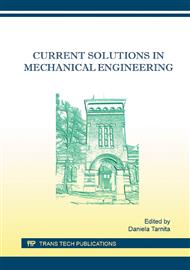p.55
p.61
p.65
p.71
p.75
p.79
p.85
p.91
p.95
Investigation on the Intake Process for a Theoretical Twin Opposite Piston Compressor Using R744 Refrigerant
Abstract:
This study aims to validate the use of R744 for a resonant twin piston compressor for domestic applications. The vapor-compression refrigeration is the most commonly approached method for cooling household appliances such as refrigerators and air conditioning systems. The R134a refrigerant is one of the most suitable refrigerants from an energetic point of view. R744 (CO2) compressors are less efficient, but the fact that the R134a raises serious environmental issues pushes commercial trend towards the usage of R744 [1]-[3]. Use of R744 in household appliances is currently an open topic and no company has switched yet to the environmental-friendly alternative. In this paper the fill efficiency will be simulated in order to validate if a conventional compressor such as the opposite twin piston compressor is capable of filling with refrigerant when operating at a 50Hz frequency. Such a validation can enable further investigations regarding the replacement of R134a with R744.
Info:
Periodical:
Pages:
75-78
Citation:
Online since:
January 2016
Authors:
Keywords:
Price:
Сopyright:
© 2016 Trans Tech Publications Ltd. All Rights Reserved
Share:
Citation:


